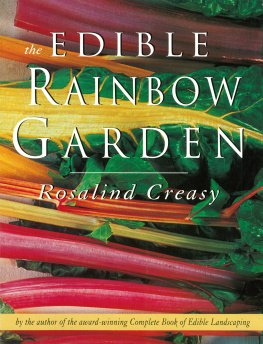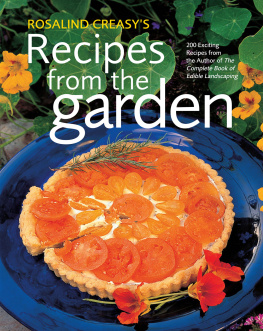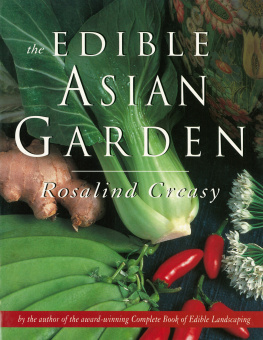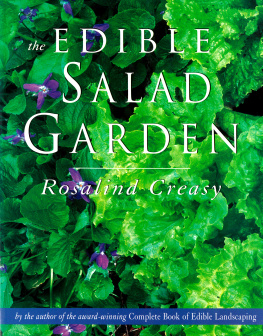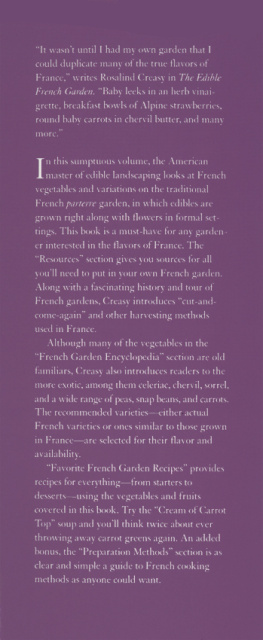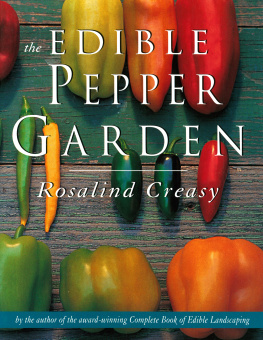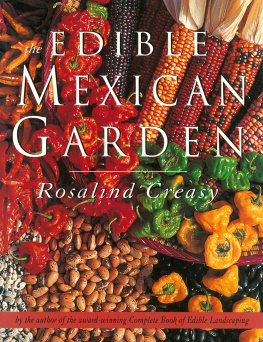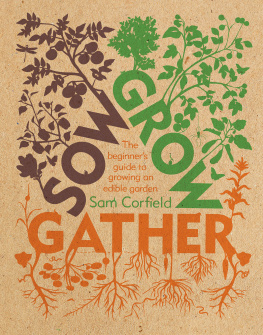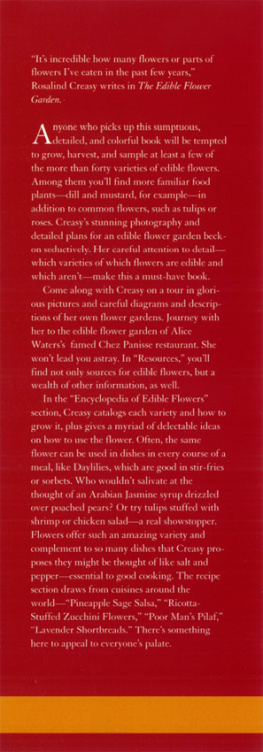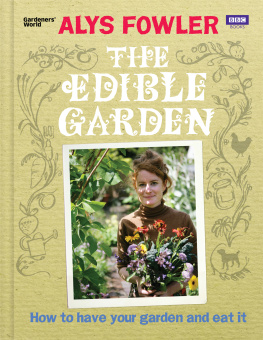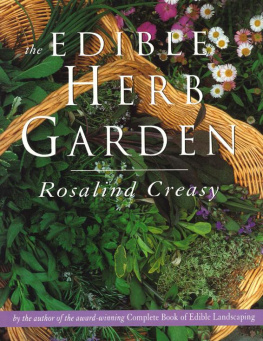acknowledgments
M y garden is the foundation for my books, photography, and recipes. For nearly twelve months of the year we toil to keep it beautiful and bountiful. Unlike most gardens, it is a photo studio and trial plot, and must therefore be glorious, healthy, and productive. To complicate the maintenance, all the beds are changed at least twice a year. Needless to say, it is a large undertaking. For two decades, a quartet of talented organic gardener/cooks have not only given it hundreds of hours of loving attention, but they have also been generous with their vast knowledge of plants. Together we have forged our concept of gardening and cooking, much of which I share with you in this series of garden cookbooks.
I wish to thank Wendy Krupnick for giving the garden such a strong foundation and Joe Queirolo for maintaining it for many years and lending it such a gentle and sure hand. For the last decade, Jody Main and Duncan Minalga have helped me expand my garden horizons. No matter how complex the project, they enthusiastically rise to the occasion. In the kitchen, I am most fortunate to have Gudi Riter, a very talented cook who developed many of her skills in Germany and France. I thank her for the help she provides as we create recipes and present them in all their glory. I want to thank Carole Saville who, over the years, has generously shared her vast knowledge of unusual plants and exotic cooking techniques.
I thank Dayna Lane for her steady hand and editorial assistance. In addition to day-to-day compilations, she joins me on our constant search for the most effective organic pest controls, superior vegetable varieties, and the best sources for plants.
I rely on technical support from an assortment of people in a number of fields. Nona Koivula, executive Director of All-American Selection, leads me to knowledgeable experts and locates photos of unusual vegetables; John Navazio Ph.D, plant breeder at Alf Christianson Seed Co., provides nutritional information; Richard Merrill, botany professor extrodinaire at Cabrillo College, lends botanical support; and W. Atlee Burpee Co. and Park Seeds, provide needed photos.
I would also like to thank a large supporting cast: my husband, Robert, who gives such quality technical advice and loving support; Jan Blm, of Seeds Blm and Renee Shepherd of Renees Garden for sharing years of rainbow information; Doug Gosling, for his love of exotic vegetables; a triumvirate including Jane Whitfield, Linda Gunnarson, and David Humphrey who were integral to the initial vision of this book; Kathryn Sky-Peck for providing the design and quality of the layout; and Marcy Hawthorne for the lovely drawings. Heartfelt thanks to Eric Oey and to the entire Periplus staff, especially Deane Norton, Jan Johnson, and Sonia MacNeil, for their help. Finally, I would like to thank my editor, Jeanine Caunt, for her attention to detail and her enthusiasm. Her constant vigilance assures a book of which we can all be proud.

appendix A planting and maintenance
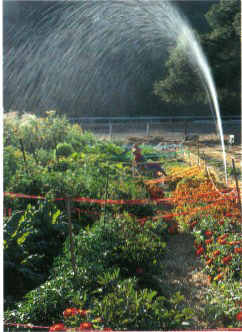
T his section covers the basics of planning a vegetable garden, preparing the soil, starting seeds, transplanting, fertilizing, composting, using floating row covers, rotating crops, mulching, watering and installing irrigation, and maintaining vegetables.
Planning Your Vegetable Garden
Vegetables are versatile. You can interplant a few colorful varieties among your ornamentalsmany vegetables grow well in the same conditions as annual flowers. Or you can add ribbons and accents of color to your existing vegetable garden. Or you can create an entire rainbow garden from rough sketch to harvest. In addition, most vegetables grow well in containers and large planter boxes.
The first step in planning any vegetable garden is choosing a suitable site. Most chefs recommend locating the edible garden as close to the kitchen as possible, and I heartily agree. Beyond that, the majority of vegetables need at least six hours of sun (eight is better)except in warm, humid areas, where afternoon or some filtered shade is bestand good drainage.
Annual vegetables need fairly rich soil with lots of organic matter. Note the type of soil you have and how well it drains. Is it fertile and rich with organic matter? Is it so sandy that water drains too fast and few plants grow well? Or is there a hardpan under your garden that prevents roots from penetrating the soil or water from draining? Poor drainage is a fairly common problem in areas of heavy clay, especially in many parts of the Southwest with caliche soilsa very alkaline clay.
Its important to answer such basic questions before proceeding because annual vegetables should grow quickly and with little stress to be tender and mild. Their roots need air; if the soil stays waterlogged, roots suffocate or are prone to root rot. If you are unsure of the drainage in a particular area in your garden, dig a hole about 10 inches deep and 10 inches wide where you plan to put your garden. Fill the hole with water immediately and again the following day. If theres water in the whole eight to ten hours later, find another spot in the garden that will drain much faster. Amend the soil generously with organic matter and mound it up at least 6 to 8 inches above the ground level. Or grow your vegetables in containers. Very sandy soil that drains too fast also calls for adding copious amounts of organic matter.
Find out the garden soil pH and nutrient levels with a soil test kit purchased from a local nursery or your states university extension service, which can also lead you to sources of soil tests and soil experts. Most vegetables grow best in soil with a pH between 6.0 to 7.0in other words, slightly acidic. Soil below 6.0 ties up phosphorus, potassium, and calcium, making them unavailable to plants; soil with a pH much higher than 6.5 ties up iron and zinc. As a rule, rainy climates have acidic soil that needs the pH raised, usually by adding lime; arid climates have fairly neutral or alkaline soil that needs extra organic matter to lower the pH.
After deciding where you are going to plant, its time to choose your plants. See Designing a Rainbow Garden for suggested vegetables and flowers. Be sure to select species and varieties that grow well in your climate. As a rule, gardeners in northern climates and high elevations do well with vegetables that tolerate cool and/or short-summer conditions. Many vegetable varieties bred for short seasons and most salad greens are great for these conditions. Gardeners in hot, humid climes have success with plants that tolerate diseases well and are especially heat tolerant.
The USDA Plant Hardiness Zone Map has grouped eleven zones according to winter temperature lows, a help in choosing perennial plants but of limited use for annual vegetables. The new Sunset National Garden Book, published by Sunset Books, gives much more useful climatic information; it divides the continent into forty-five growing zones. Several regional maps describe the temperature ranges and growing season in detail. The maps are an integral part of this information-packed resource. Of additional interest to the vegetable gardener is the AHS Plant Heat-Zone Map, published by the American Horticultural Society. The heat map details twelve zones that indicate the average number of days each year when a given area experiences temperatures of 86F or higherthe temperature at which many plants, including peas and most salad greens, begin to suffer physiological damage. In The Rainbow Vegetable Encyclopedia on page , I indicate which varieties have a low tolerance to high temperatures and those that grow well in hot weather. See the Bibliography for information on obtaining the heat map.

